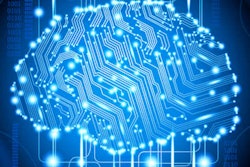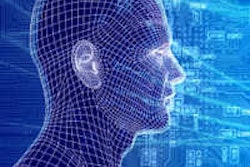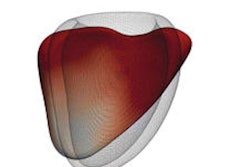
Machine learning will "displace much of the work of radiologists" and other physicians who rely on interpreting digitized images, according to an opinion article published September 29 in the New England Journal of Medicine.
The article paints a picture of a brave new world in which big data, machine learning, and other artificial intelligence technologies combine to deliver healthcare that's more accurate -- to the benefit of patients (NEJM, September 29, 2016, Vol. 375:13, pp. 1,216-1,219).
But machine learning will also create "winners and losers in medicine," with radiologists apparently among the losers as their jobs are replaced by machines. The authors of the article are Dr. Ziad Obermeyer of Harvard Medical School and Brigham and Women's Hospital and Dr. Ezekiel Emanuel, PhD, of the University of Pennsylvania.
Obermeyer and Emanuel discuss how the emerging breed of machine-learning tools differs from current algorithms used in healthcare, which they call "expert systems." The latter are rule sets that encode knowledge on a particular topic and are applied to draw conclusions about clinical scenarios, such as assessing the appropriateness of an imaging exam, the authors wrote.
On the other hand, machine-learning approaches problems by learning rules from data, much as a physician progressing through residency might. Algorithms can analyze vast numbers of variables, looking for combinations that can predict outcomes. The value of machine learning is that it is capable of handling an enormous number of predictors and combining them in a variety of ways.
Obermeyer and Emanuel use the example of a chest radiograph, in which the "digital pixel matrices" underlying the radiograph become "millions of individual variables" that can be analyzed by algorithms that combine lines and shapes and learn the contours of fracture lines and other examples of pathology.
Ultimately, machine learning will disrupt three main areas of medicine, according to the authors:
- It will dramatically improve the ability of healthcare providers to establish a prognosis.
- It will "displace much of the work of radiologists and anatomical pathologists."
- It will improve diagnostic accuracy.
On the second point, Obermeyer and Emanuel predict that in the future digitized images will be fed directly to algorithms instead of physicians, as advances in computer vision drive performance improvements. Patient safety advocates will even get into the fray by recommending the use of algorithms over humans, the authors believe.
The radiology community has already been struggling with the arrival of artificial intelligence and machine learning, with some observers portraying the technology as a boon to radiologists, while others believe that artificial intelligence is so many years away from replicating the work of radiologists that it doesn't represent a threat to any radiologist's job.
Obermeyer and Emanuel are not so sure, however, claiming that the time scale for the disruptions caused by machine learning will be "years rather than decades." In a related article published September 18 in the Journal of the American College of Radiology, Emanuel and another co-author predicted that machine learning will become a "powerful force" in radiology in the next five to 10 years.
"As patients' conditions and medical technologies become more complex, the role of machine learning will grow, and clinical medicine will be challenged to grow with it," Obermeyer and Emanuel concluded. "As in other industries, this challenge will create winners and losers in medicine. But we are optimistic that patients, whose lives and medical histories shape the algorithms, will emerge as the biggest winners as machine learning transforms clinical medicine."



















